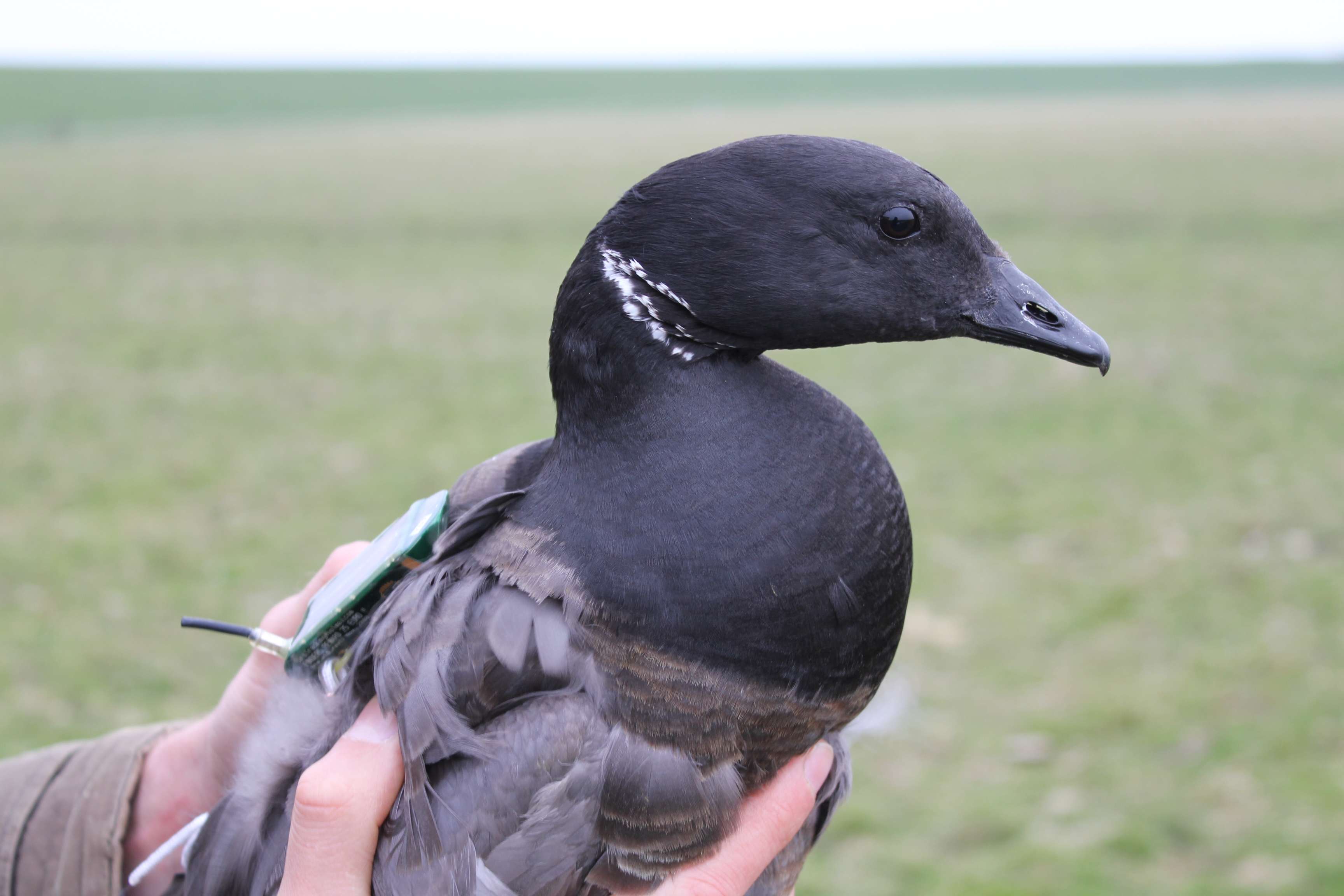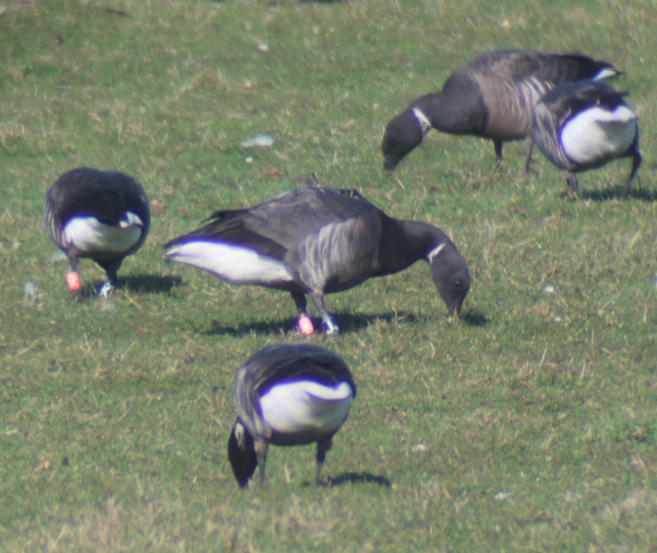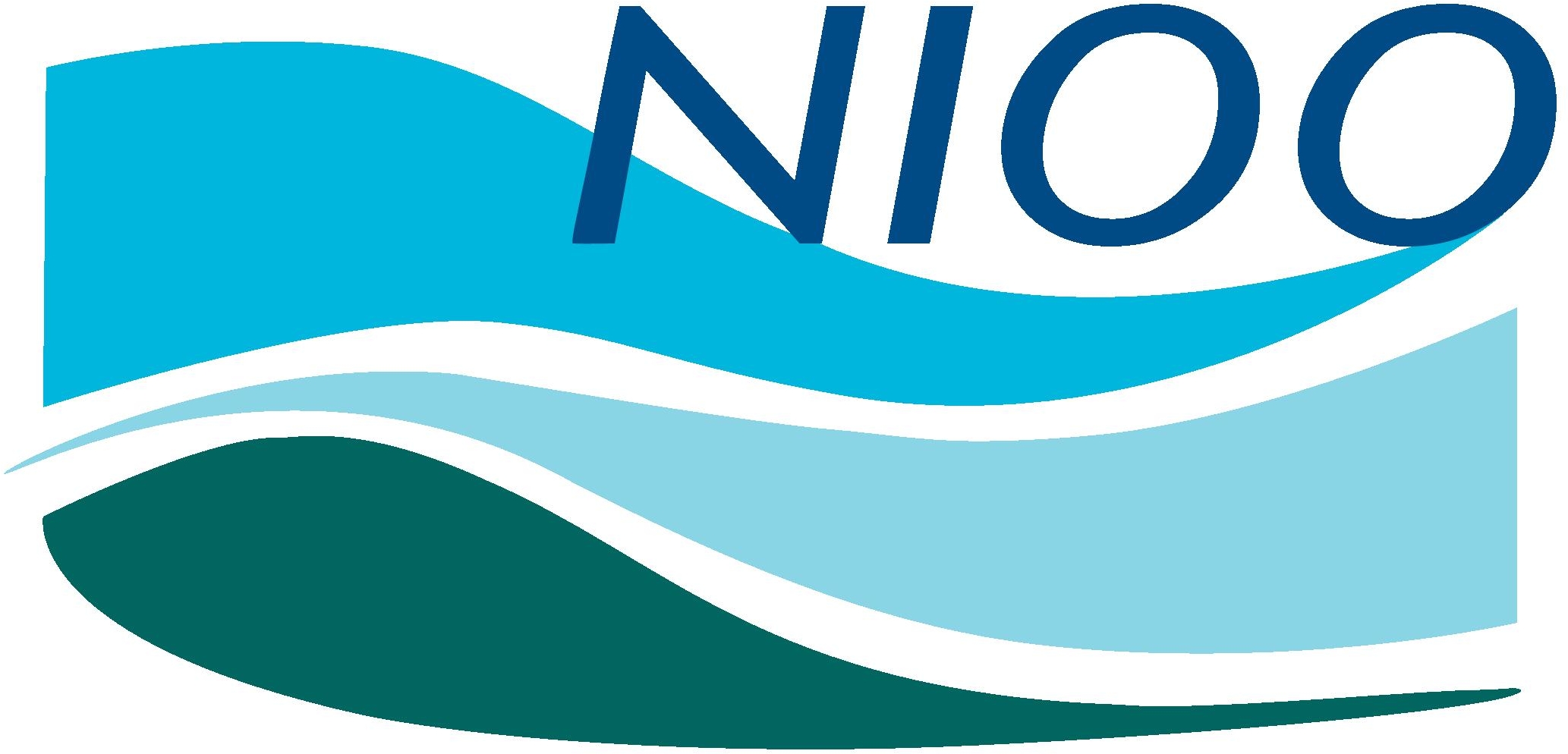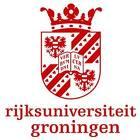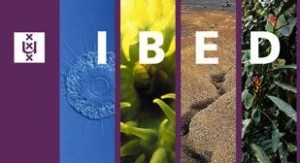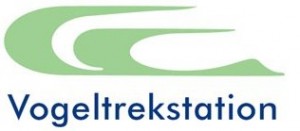Habitat use of Brent geese along their flyway
Species: Brent Goose
Brent geese Branta bernicla are high‐arctic breeding birds that feed extensively on intertidal mudflats outside the breeding season, where they graze on eelgrass Zostera spec. Eelgrass beds are a restricted and endangered habitat around the world. After the decline of eelgrass beds in the Dutch Wadden Sea, the Brent goose population initially collapsed, but recovered later due to conservation actions and a habitat‐switch towards lower salt marsh vegetation and agricultural fields. Recently, the population has declined again following a long series of poor breeding years. Brent geese were among the first migratory species for which it was shown that spring conditions in the temperate region carried over to breeding performance in the Arctic. Recent evidence suggests that the quality of wintering and stopover sites may be vitally important to population processes in migrants.
In this project, we aim to investigate the importance of non‐breeding habitats, eelgrass beds in particular, for Brent goose population dynamics and individual fitness, relative to the importance of alternative habitats. We will equip in total 30 birds with GPS trackers both on the island of Terschelling and the island of Schiermonnikoog in the Dutch Wadden Sea. (See Table 1 below for leg ring codes and GPS device ID numbers.) The tags will record the birds’ geographic position every hour year-round, which will reveal in detail the habitat use of the Brent geese along their flyway. We will assess whether the reproductive success of Brent geese that use the intertidal areas of the Dutch Wadden Sea intensively is different from that of Brent geese in other habitats, which may be investigated through analyses of colour-ringing data, the collected GPS data, and visual observations of family relations (number of offspring per pair).
We will also study the role of competition with the closely related barnacle goose Branta leucopsis. Barnacle geese have recently expanded their breeding area towards the south-west, and have changed the timing of their spring departure dramatically. Barnacle geese are currently present in high numbers on the island of Schiermonnikoog, but not on the island of Terschelling. Barnacle geese originally departed from the Wadden Sea in March, but have recently extended their stay well into May, now overlapping with the period of intense grazing by Brent geese in preparation for their long distance migration to the Arctic. The enormous increase of the Barnacle goose population could literally ‘push’ the Brent geese off the marsh, since Barnacle geese are the dominant species due to their larger size, and are able to feed on salt marsh vegetation more efficiently due to their smaller bills and higher bite rate. Competition will be studied by simultaneous field observations on the salt marshes of Terschelling and Schiermonnikoog.
The project is funded by the Wadden Fund project Metawad‐1. Metawad‐1 is a 5-year research program carried out by a consortium made up of NIOZ, the University of Groningen, The Netherlands Institute of Ecology (NIOO), The Nature Information Foundation (Stichting Natuurinformatie) and the Dutch Centre for Field Ornithology (SOVON).
Table 1: Brent Goose leg ring codes and their corresponding GPS device ID numbers
| Leg ring code | GPS ID | Capture site |
| RON- | 795 | Terschelling |
| RON5 | 790 | Terschelling |
| RON6 | 796 | Terschelling |
| RON7 | 740 | Terschelling |
| RON8 | 793 | Terschelling |
| RON9 | 791 | Terschelling |
| RONA | 689 | Terschelling |
| RONC | 692 | Terschelling |
| ROND | 715 | Terschelling |
| RONF | 698 | Terschelling |
| RONH | 700 | Terschelling |
| RONJ | 701 | Terschelling |
| RONK | 711 | Terschelling |
| RONN | 714 | Terschelling |
| RONO | 706 | Terschelling |
| RONP | 709 | Terschelling |
| RONR | 707 | Terschelling |
| RONT | 718 | Terschelling |
| RONU | 713 | Terschelling |
| RONV | 702 | Terschelling |
| RONX | 710 | Terschelling |
| RON3 | 699 | Schiermonnikoog |
| RONY | 619 | Schiermonnikoog |
| RFN3 | 613 | Schiermonnikoog |
| RFN4 | 737 | Schiermonnikoog |
| RFN5 | 618 | Schiermonnikoog |
| RFNO | 617 | Schiermonnikoog |
| RFNP | 739 | Schiermonnikoog |
| RFNR | 738 | Schiermonnikoog |
| RFNY | 614 | Schiermonnikoog |
Contact Persons:
Adriaan Dokter a.m.dokter@uva.nl
Wimke Fokkema w.fokkema@rug.nl
.
Conditions of Use: We kindly ask you to respect the intellectual property rights of the academics posting their work on this website. As such, information and content, including images and data, provided on this website may not be copied, reproduced or republished in any form without the express written permission of the UvA-BiTS manager (UvA-BiTS@uva.nl).
.


